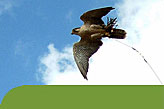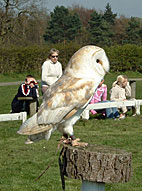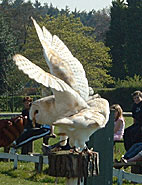

British Barn Owls are a beautiful pale buff colour with white under sides and take on a ghostly appearance as they fly silently though the night. Barn Owls however, are not strictly nocturnal and may often be observed at dawn and dusk quartering the ground alongside hedgerows hunting their prey which consists of a variety of small birds and mammals but particularly voles, mice and shrews. Barn Owls mate for life and their territory will never extend far from their nest site. Traditional nesting places include holes in trees and of course the roofs of old barns and other farm outbuildings. However, as old barns are replaced with grain stores and other buildings that do not have provision for Barn Owls, a number of schemes have been pioneered for erecting next boxes designed specifically for Barn Owls. This together with the EU agricultural policy for creating set aside land as enabled the Barn Owl population to recover slightly in the UK but they are still very much at risk. Threats still include habitat loss, poisoning, collisions with vehicles, and drowning in cattle troughs. A breed and release program designed to boost Barn Owl numbers in Britain was halted as many people were releasing young Barn Owls that had no experience of hunting for themselves and which consequently perished. The Raptor Trust, a local charity working for birds of prey conservation
has leaflets available at falconry centre for those wishing to build
and site a Barn Owl nest box. |
|
| Barn Owl Facts |
Name: Barn Owl
- Tyto alba |


